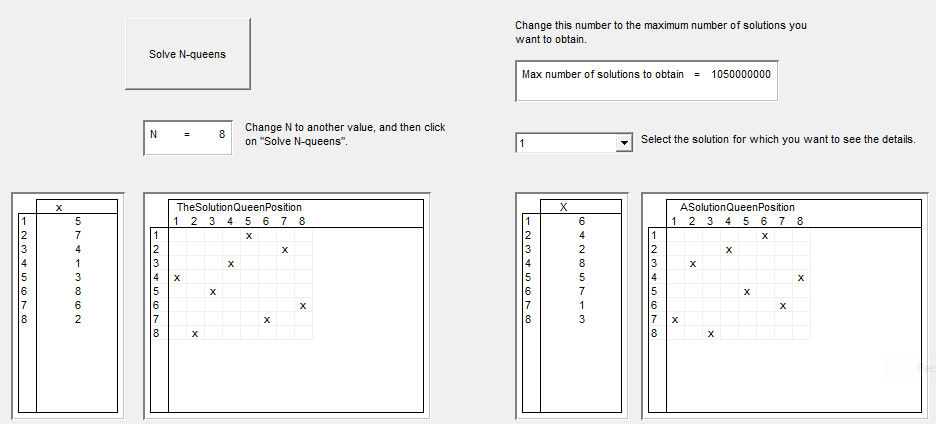Generate Multiple Solutions with CP Optimizer
Some of the solvers in AIMMS, including the CP Optimizer solver for Constraint Programming problems, support not only returning a single (optimal) solution, but also a pool of feasible solutions.
Some time ago, Hakank’s website has done a thorough in the article “A first look at AIMMS + CP (AIMMS with Constraint Programming)”. One of the remarks posted at the end was that it was not completely clear how to obtain multiple solutions from the CP Optimizer solver.
In this post we will show how to instruct the solver to create additional solutions and retrieve them to AIMMS after the solver execution is finished. We will use the N-Queens problems from Hakan’s article as an example.
Solution Storage Limit
In the case CP Optimizer, you can influence the number of solutions that are created (and stored in the GMP solution repository)
via the option solution_storage_limit, which is an option specific to CP Optimizer.
Find it under .
By setting this option to a very large value, you can instruct the solver to store all solutions to the problem in the GMP solution repository. You can either change this setting explicitly in the project settings, or you can use the block statement to temporary use alternative project settings. For example:
1!MaxNumberOfSolutions is a parameter with a very large initial value
2block where solution_storage_limit := MaxNumberOfSolutions ;
3 solve NQueensPlan;
4endblock;
After the solve is finished, you can use the AIMMS function GMP::Solution::SendToModel to transfer the solution values from the GMP solution repository to the variables in your project. This approach does require that for every variable X in your problem, you introduce a new parameter X2 that has the same index domain as X with an index added for indexing the solutions. In our example, this parameter is XValueInSolution.
1!Get the number of solutions
2NumberOfSolutions := gmp::Solution::Count('NQueensPlan') ;
3
4while LoopCount <= NumberOfSolutions do
5 !For each solution that is stored in the GMP solution repository retrieve it
6 gmp::Solution::SendToModel( 'NQueensPlan', LoopCount ) ;
7
8 !Now store the values for this solution in a parameter that is
9 !also indexed over the number of solutions.
10 XValueInSolution( LoopCount , i ) := x(i) ;
11endwhile ;
Visualization of Results
Another small modification made to this project is that it graphically shows the locations of the queens on a chessboard. This allows to quickly compare different solutions, as depicted below:

Fig. 18 Graphical representation of NQueens solution
Other Solvers
Other solvers that directly support working with a solution pool are Baron and CPLEX. For Baron, you can influence the behavior with the project setting number_of_best_solutions and for CPLEX, you can modify the behavior by setting the project setting do_populate to the value 1.
Note that with solvers that don’t directly support a solution pool, but do support the Incumbent callback, you can manually create the solution repository by storing each solution found by using the Incumbent callback.